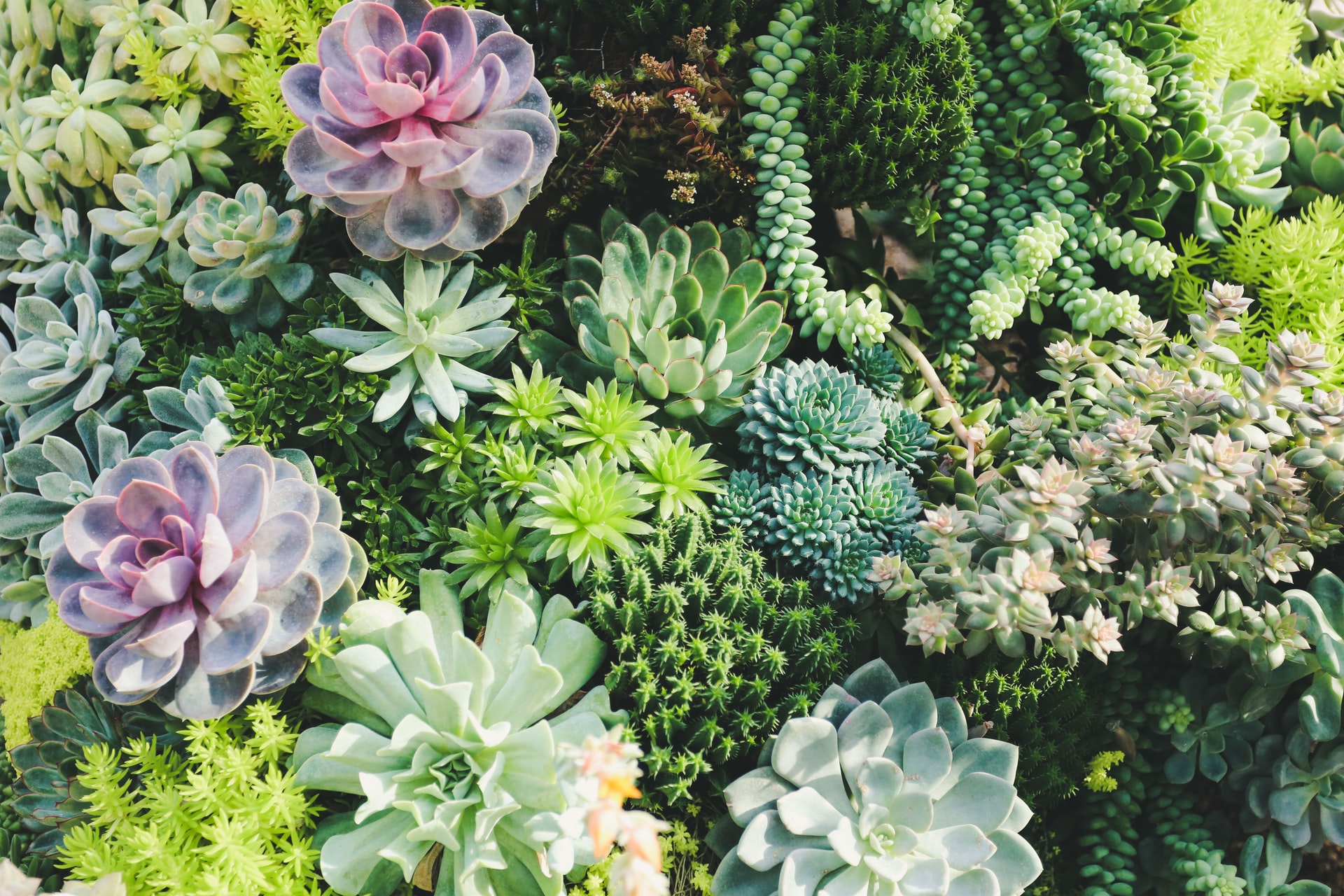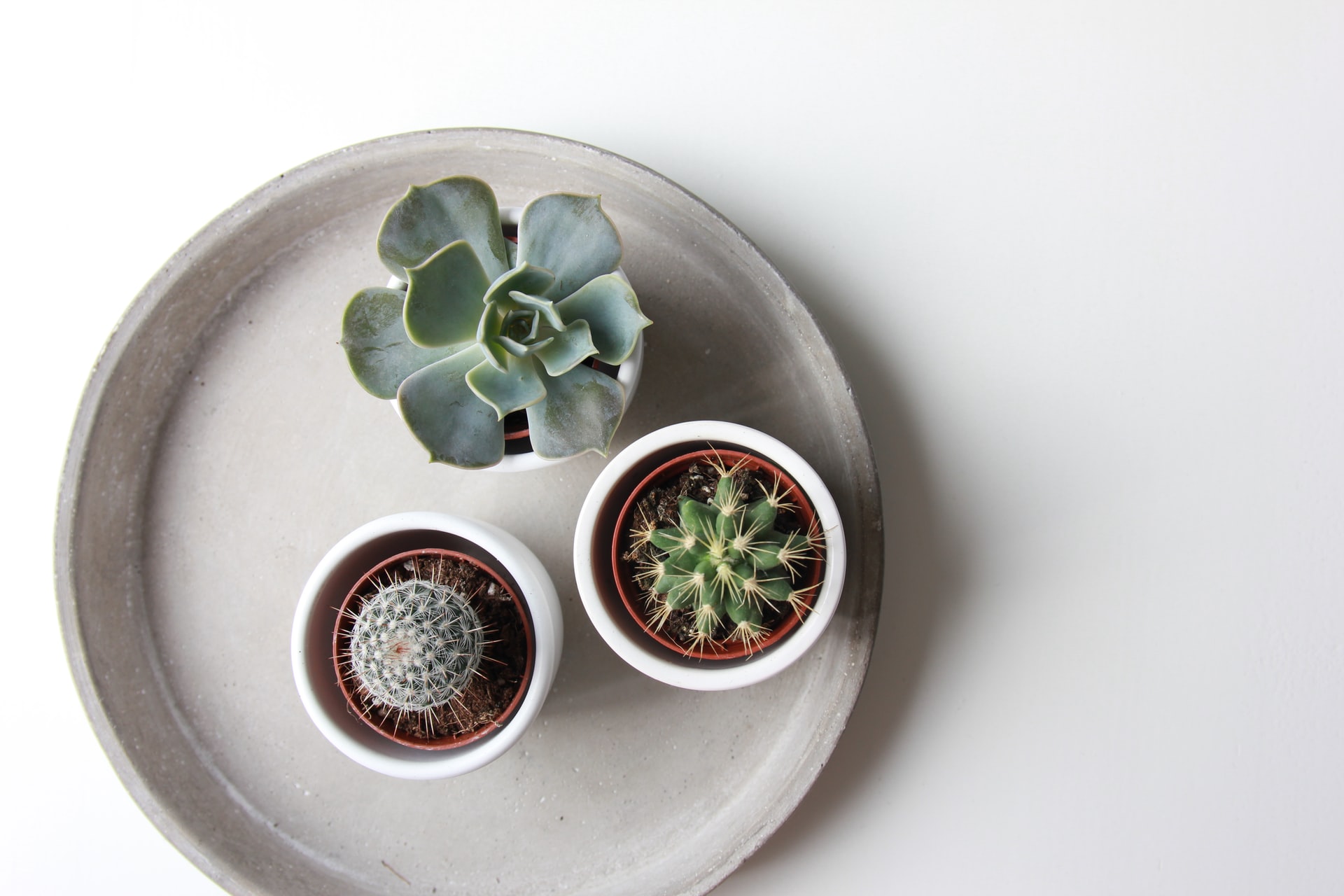During the past 2 years, my roommate and I have been obsessed with plants, but neither of us has a green thumb and can take care of plants. We can’t even take care of ourselves sometimes, and taking care of plants got kind of rough. However, my mom came in to our rescue and told us to start our plant journey with succulents because they are the easiest plants on the market to take care of. Succulent come in a variety of shapes, colors, and forms, and this is the perfect way to give your home a makeover on a budget. So, without further ado, let’s learn more about succulents and how to take care of these house plants.
What are succulents?

They are a group of plants that usually store water in their leaves. Because they have to store water, these leaves tend to b fleshy and thick, and some of the genera from the succulent family tree have thicker leaves than others. Succulents are drought resistant and tend to drive in dry climates, and they don’t like humidity. They are the perfect plants for neglectful and forgetful plant parents (like my roommate and me), and they are very easy to take care of and can be grown both inside and outside. Succulents are a diverse group of plants, and they come in a plethora of colors, shapes, and even textures. There are over 20 000 varieties of succulents that you can choose from, and as most of them grow in dry conditions, they are the best plants to start your journey with. They prefer a warmer climate, and most of them can’t survive freezing temperatures. However, some species of succulents can survive about the harsh freezing winters. Some of the most popular plants on the market are Agave, Aloe, Cacti, Echeveria, Euphorbia, Sedum, Sempervivum, and even Yucca.
How to care for succulents?
As with all plants, there are 4 things you ought to consider while taking care of your trusty succulents. These 4 things are light, soil, temperature, and finally, water. Let’s learn more about these 4 important things to take care of your succulent friends:
1. Light

Both indoors and outdoors plants need at least 3 hours of direct sunlight daily for them to thrive. It is preferable if your plants get the morning sunlight because the afternoon sun can be too harsh for even your plants. Even though they are drought-resistant plants, some succulents may be overexposed with too much sunlight, and this can damage and look sunburned with scars on their leaves. Our best advice here is to keep your succulents in areas with filtered sunlight. You will know if the succulent isn’t receiving enough sunlight because they’ll start to grow and reach towards the sun. Colored succulents might even turn green even if they aren’t receiving enough light.
2. Soil

A well-drained soil is vital for your succulents’ health, and this is important because too much water will cause the plant to rot further down the line. If you are growing your succulent in a pot, then you ought to have drainage holes at the bottom of the pot. If you are potting your succulents yourself, then you ought to look for a potting mix for succulents and cacti, this mix is designed to allow better drainage and will regulate the water in the soil, and it is better than regular potting soil. You can DIY your own potting mix if you can’t fix any commercial potting mix or if it is too expensive.
3. Temperature

Succulents can tolerate a wide range of temperatures, but they need to get the right amount of temperature of water and sun to thrive. Extreme heat can cause them to droop, and if the soil gets too hot or dry or below freezing point, then this will freeze the water in their leaves and might eventually kill the plants. However, for more delicate succulents, you ought to keep them at a more regulated temperature; some succulents aren’t meant to be kept above temperatures above 35°C or 95°F for us Americans out there, even below freezing points.
4. Water

They grow in arid climates, and as a result, this makes them drought resistant and don’t need much water to grow. As argued earlier, they store the water in their stems and leaves. Be sure that the soil is dry before you do so; if the soil is still humid, then this means that your succulent doesn’t need to be watered again anytime soon. Soak the soil around the plant and don’t water it again until the soil is dry. If the roots of the plants stay wet for too long, they’ll begin to rot, making the whole succulent rot. If this is happening, then you can tell because you’ll see the leaves turn black and turning mushy and they might even start to grow mold. Generally, you only need to water your succulent one a week or even every 10 days, but this depends on the climate and soil condition. If you are unsure how much to water your succulent, then you ought to underwater it rather than overwater it.
I think most of us started to buy succulents and plants during the pandemic because it was a way for most of us to get our minds off the dark and trying times which was this pandemic. Sound off in the comments section below and tell us if you want to read more about succulents.






1 Comment
[…] the past two years, my roommate and I have been obsessed with plants, but neither has a green thumb and can take care of plants. We can’t even take care of ourselves sometimes, and taking care […]